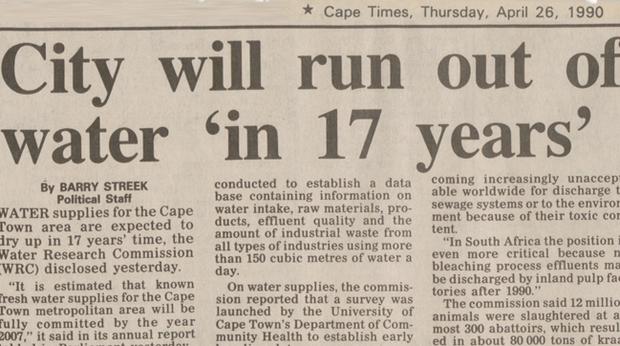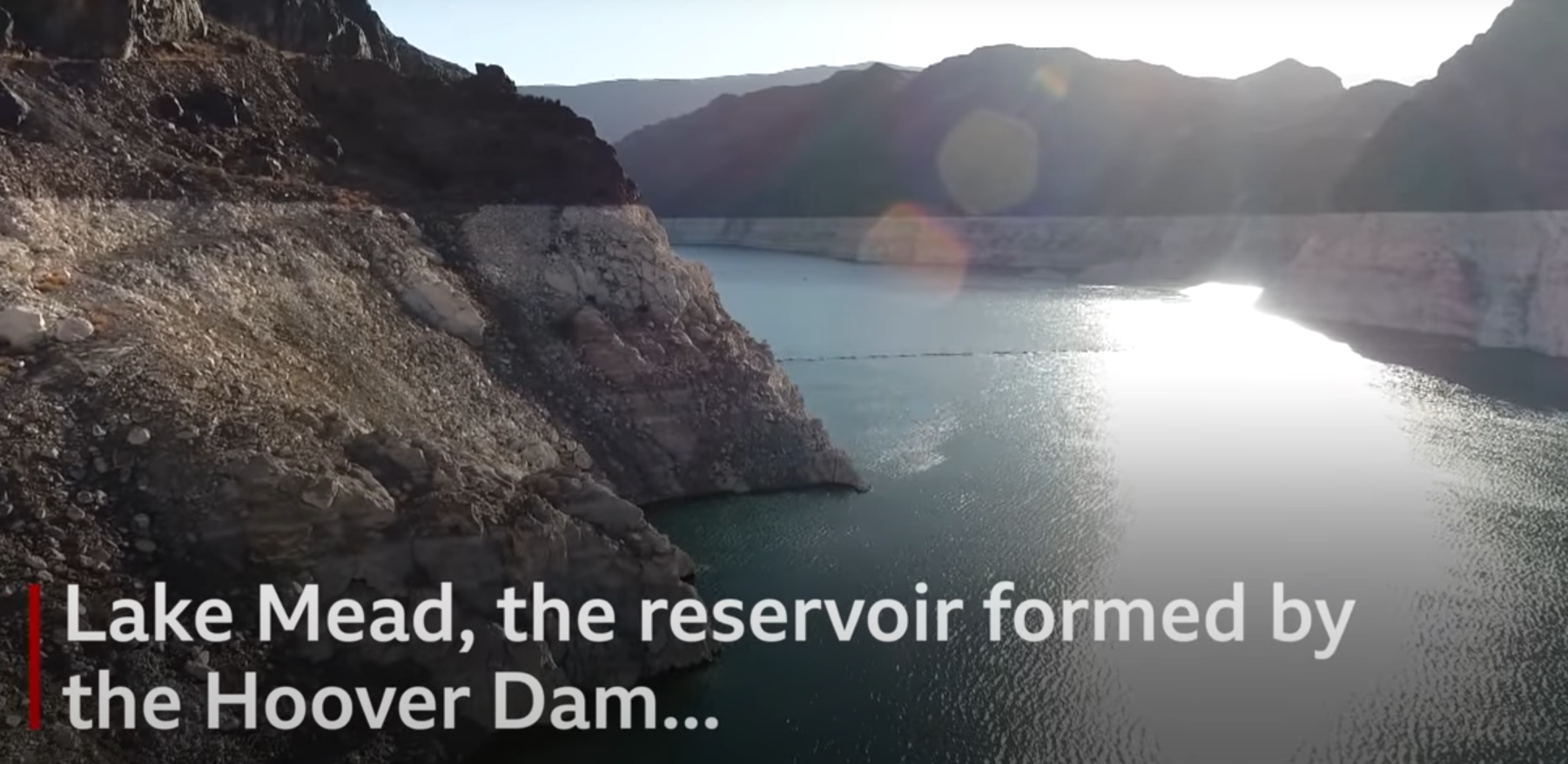Cape Town – Cape Town authorities should have begun implementing water augmentation schemes in 2012 or earlier, the Water Research Commission (WRC) said.If this had been done, there would be no talk of Day Zero, said WRC chief executive Dhesigen Naidoo.
Images circulating on social media show a 1990 article in the Cape Times, wherein the WRC warned that supplies for the Cape Town area were expected to dry up in 17 years’ time.
The article has been confirmed as published in April of that year.
Veteran journalist Barry Streek wrote at the time: “It is estimated that known fresh water supplies for the Cape Town metropolitan will be fully committed by the year 2007.
“Thereafter, the reclamation of purified sewage effluent to augment supplies is a distinct possibility.”
Naidoo said similar warnings were repeated in the commission’s 2012 report.
“The 17 years was not realised because many things happened on the back of that. Not immediately, but when Kader Asmal became minister of Water in 1994, there were a range of new discussions that were happening around the development of new water laws,” Naidoo said.
The government embarked on a comprehensive water conservation and demand management policy for the whole country.
“What was in discussion at the time was a new dam for the Western Cape, what is now called the Berg River Dam,” he said.
When the report came out, Naidoo said it was not picked up immediately, but was in the public discourse.
“In 2012, we had had two very mild El Niño events preceding that, so a higher impact El Niño was due, but not to the intensity we found. The El Niño impact in 2014/15 was in fact the highest impact El Niño globally.”
Water shortages would be a result of this, he added.
“Cape Town’s weather pattern is roughly out of sync by six months with the rest of the country. And so while the rest of the country was in its most severe phase of drought, it hadn’t actually hit the Western Cape yet.
“The augmentation systems now being looked at in great earnest, and they are very good projects, if they’d had the opportunity to have started two or three years earlier, then there wouldn’t be discussion about Day Zero.
“If the City honestly reflects on its own planning regimen, it too would come to the conclusion that they should have reacted differently as early as 2012, or perhaps even before that,” Naidoo said.
But City officials and national government operated in an economic environment where they had to prioritise different issues.
“It would have been good if there was a more rapid response to water, but it is also explainable why people had to prioritise other things ahead of it,” Naidoo said.
Deputy mayor Ian Neilson said that since the report was released, the City had adopted a strong conservation and infrastructure-led approach to water management.
“These plans are reviewed con stantly. It is now in fact 28 years after the report was released.
“Despite our population growth almost doubling since 1996, our water demand has remained relatively flat,” he said.
The City started implementing aggressive pressure management technology, enhanced infrastructure maintenance, paying for some of the big national government dams to have water allocations if required and widened public education initiatives to drive water conservation and water demand management.
Prior to the onset of the drought, the City was using water well under its registered allocation from the bulk water schemes.
“Our current situation has been caused by an abnormal climatic event. Low rainfall has now persisted longer than any of the hydrological models could have anticipated.
“However, our sustained efforts and holistic approach have enabled us to extend our water supplies significantly in a period that is characterised as the worst drought in recorded history,” Neilson said.



